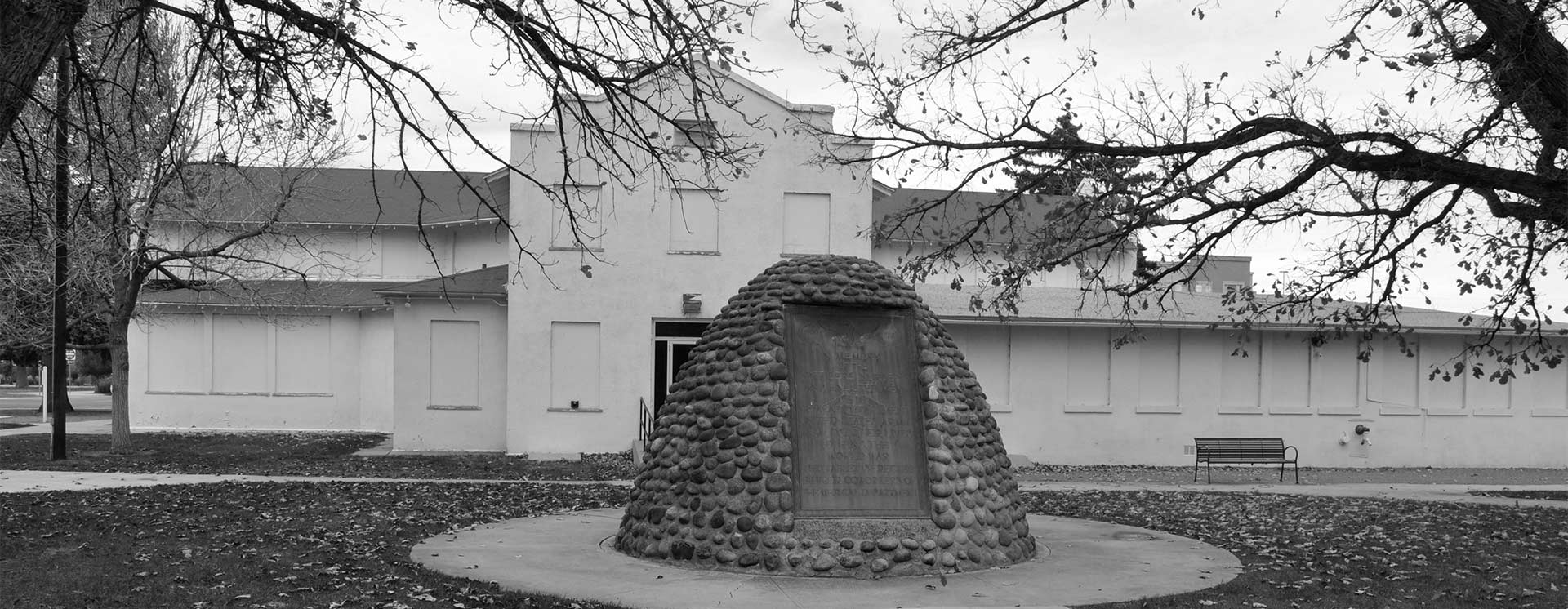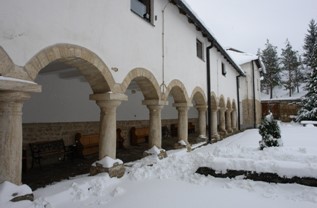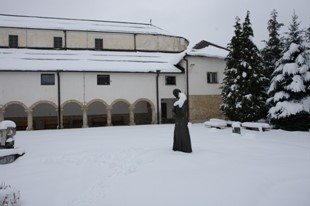
World War One Sites - The NETWORLD Database
The Franciscan Monastery in Guča Gora, Travnik, Bosnia and Herzegovina
The Franciscan monastery and church in Guča Gora were first built in 1859. Guča Gora is a very old village. It is mentioned in the written documents in the gift of King Sigismund of Hungary on September 5th 1425, by which the king donates the land property of Paku to the son of Nikola (Miloša), the branch of "de Gudcha gora de Laswa" for his merit by battling for the king against the Turks, who were already present in some parts of Bosnia at the beginning of the 15th century. Bosnian Franciscans lived in Guča Gora for over a century. For several centuries, from 15th to 18th , Guča Gora is not mentioned anywhere. This was a time of survival for Bosnian Catholics. Monasteries were demolished and abandoned, and at the end of the 17th century there were only three left, one in Kraljeva Sutjeska, and one more in Kreševo and Fojnica. It was not until the early 18th century that Guča Gora was mentioned as a Franciscan habitat. Here they had a house, which the administration of the Franciscan Order on June 8th, 1757, proclaimed a residence. The monastery experienced the most tragic moment in February 1945. After the partisan units expelled members of the German army, on February 22nd, 1945, they set the monastery and the church on fire in which the monastery burned completely and crashed. On the foundations of the southern monastery wing, Friar Ivo built a new monastic house between 1957 and 1959. In the past war, the monastery also suffered a lot. In 1993 the army devastated the church and completely destroyed the monastery. A year later, on July 11th 1994, the soldiers abandoned the monastery and handed it over to the new Guardian Friar Francis Križanac.
Bosnia and Herzegovina, Travnik
Type of WWI-heritage
- Non-Military Site of World War One Relevance
Dimensions
No information available.
State of repair/preservation
The Monastery is currently under reconstruction, and it has been so from the year 2002, but it can be said that is well preserved but needs partial renovation as well.
Historical WWI Context
The Austro-Hungarian Monarchy ruled over Bosnia and Herzegovina for 30 years and in Guča Gora, still there was no school. But before the WWI started, a small school building was built in the village but only two grades of students could be taught. When the need to start the third grade occurred, in 1911/1912, a classroom was borrowed from the Monastery and it served that purpose until 1931. Besides the regular duties of the Monastery and fulfilling the daily tasks and routines required by the calling, the school had classes in the Monastery even during the World War One. The times were difficult, work was very hard but, the school and the Monastery kept on performing their work.
Recent Images




Historical Images
State of legal protection
It is not protected by any local, regional, national or international law or agreement.
Owner
This constructional/architectural World War One heritage is owned by the Franciscan monastery Guča Gora, but the rooms that were used for schooling have been destroyed in the terrible fire of 1945.
Kind of cultural use of WWI
No information available.
Opening
No information available.
Entrance Fee
No information available.
Information regarding cities, villages, other touristic attractions (non-WWI) nearby
Architecture and artistic monuments from the socialist period of the former Yugoslavia on Smetovi; Fortress of Vranduk near Zenica; The Old City of Travnik; Kraljeva Sutjeska in Kakanj, ancient city of Bobovac; on old “Ćiro” train in Begov Han; tombstones called “Stećci” near Radimlja close to the city of Stolac.
Accomodation
No information available.
Public Transport
No information available.
Further information sources
No information available.
Other heritage sites nearby
Museums Private Collections
The Historical Museum of Bosnia and Herzegovina, Sarajevo,
City Museum of Zenica,
Museum in Travnik,
Fojnica Monastery,
Kraljeva Sutjeska Monastery.
The Franciscan Monastery in Guča Gora, Travnik, Bosnia and Herzegovina
44.24326875746132 17.732855530468782 fileadmin/res/images/layout/standar-marker.pngLocation